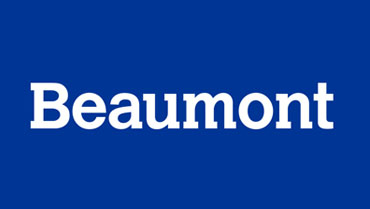Monday, July 19, 2021
Minimally invasive, water jet robotic procedure shrinks prostate while improving, preserving function
Beaumont Health is the first and only health system in Michigan to offer a novel new treatment for patients with enlarged prostates, particularly those with hard-to-treat, very large prostates.
The PROCEPT BioRobotics BPH Robotic System is a computer-guided treatment system for benign prostatic hyperplasia, or BPH. The procedure uses aquablation therapy, or small water jets, to remove sections of the prostate. Urologists at Beaumont Hospital, Royal Oak began treating patients with the system in November 2020.
“Beaumont now offers the most comprehensive treatment options available for patients with enlarged prostates,” said Beaumont urologist Dr. Jason Hafron. “The computer can actually sculpt the prostate to preserve ejaculatory function, which is not possible with the older procedures.”
There are no incisions during the procedure, and it can be completed in approximately 40 minutes.
“We’re leaping ahead with this technology, especially for men with very large prostates,” added Dr. Hafron.
One of Beaumont’s first patients, Joe Rice, 67, of Waterford, had what is considered a super enlarged prostate. Where a typical healthy adult male’s prostate weighs 40 grams, Rice’s was measured at 129 grams. The procedure reduced his prostate by about 65%, or 84 grams, making it much closer to normal size with an open channel, said Dr. Hafron.
“Before the aquablation, I felt tethered to the bathroom,” said Rice, explaining he’d have 60 seconds once he felt the need to urinate, and woke six to eight times a night. Now, he wakes once or twice and feels much less urgency. “My quality of life is so much better,” he said.
The minimally invasive robotic procedure is considered more advanced than what has traditionally been seen as the gold standard to treat BPH, known as TURP surgery (transurethral resection of the prostate), in part due to the reduced side effects for patients.
Aquablation therapy removes tissue effectively, consistently, and with a low risk of complications - providing the surgeon with predictable and reproducible outcomes and a better quality of life for the patient. The procedure provides the clarity of imaging, the precision of robots and the power of water.
“Having the technology that allows us to treat men with very large prostates in such a minimally invasive fashion that’s so precisely controlled by robotic technology is a major advance,” said Beaumont's chief of urology, Dr. Kenneth Peters, who is also a professor and chair of urology for the Oakland University William Beaumont School of Medicine.
While the TURP and other traditional prostate procedures are heat-based, using laser or vapor to reduce the size of the prostate, aquablation uses water, known as hydro-dissection, which reduces many of the side effects typically associated with prostate procedures.
“Without the heat, a lot of the patients in my practice don’t have the irritation to their urinary system associated with traditional prostate procedures,” Dr. Hafron said. “We’re used to increased urinary frequency, urgency or burning after the procedures in the recovery period.”
In addition, aquablation can be used to treat a greater number of patients with BPH than a TURP.
“The beauty of this procedure is that it can be applied to any prostate size or shape,” Dr. Hafron said. “Typically, a super enlarged prostate would require open surgery, which is associated with bleeding and other side effects.”
Other options also require a lot more time for the surgeon to perform, Dr. Peters said.
“This is where medicine is going,” said Dr. Peters. “More and more, we are seeing medicine moving to robotic assistance, where we are able to enter precise measurements into the system taken from real-time ultrasounds. It’s more precise with better outcomes.”

